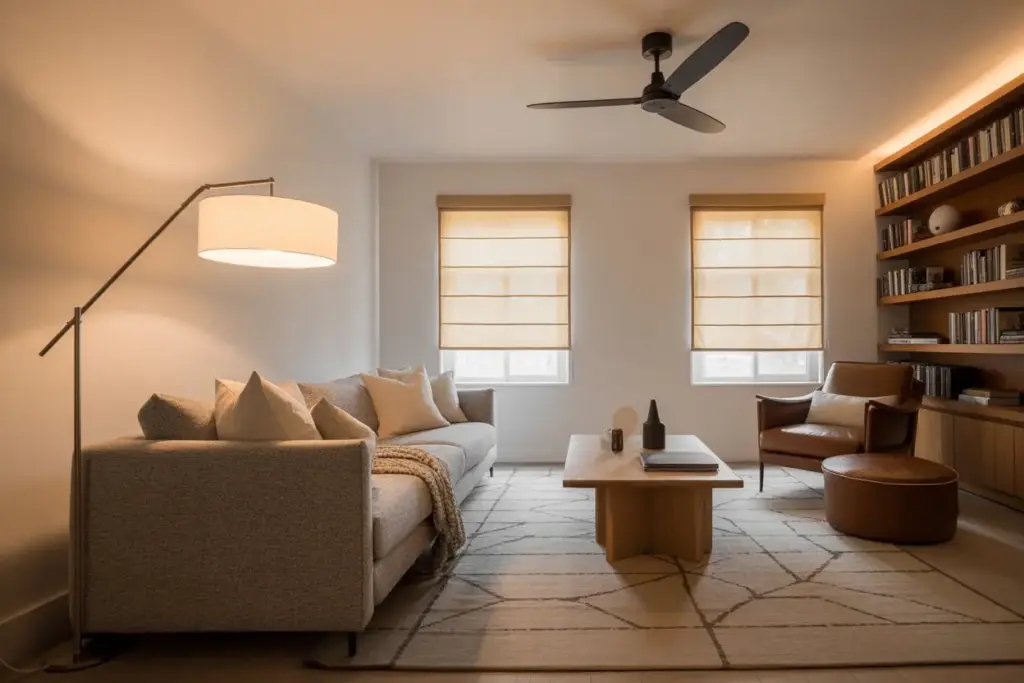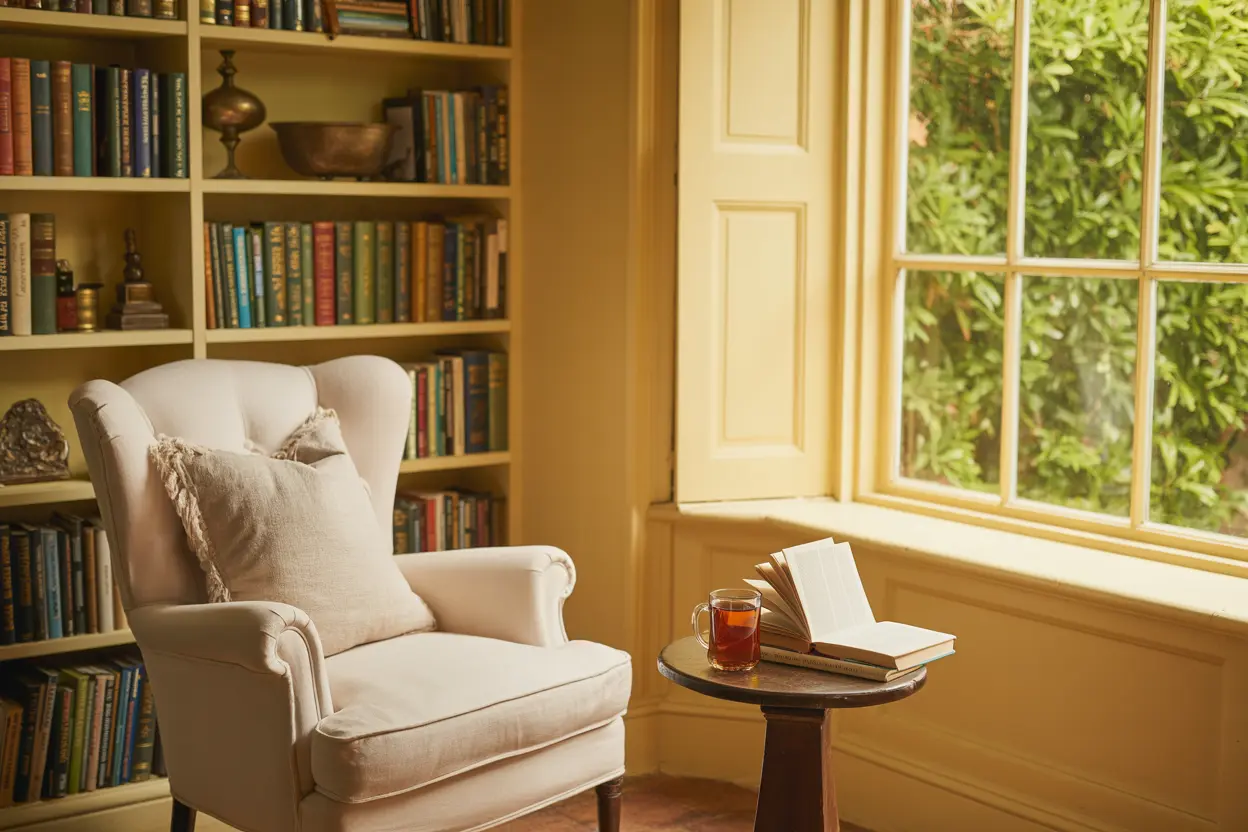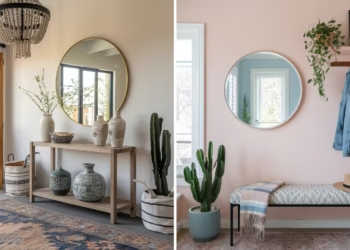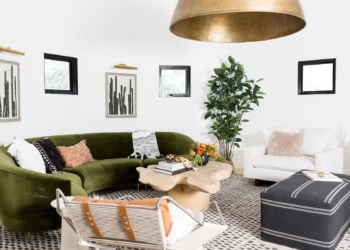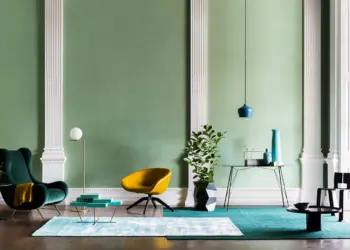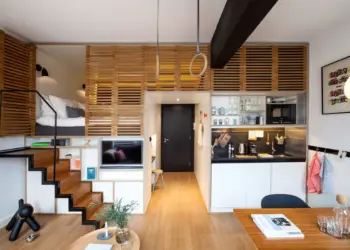More than ever, we need to read. Some to escape the present time, others to create other realities. This space dedicated to reading necessarily depends on the space available. The reading nook is a privilege. It can take the form of a separate room, a dedicated room like a second living room, an office or a library.
But inventive, it is able to intrude in the most cramped and small spaces. Studio, apartment, small bedroom or small living room also have the right to their own little bubble to read in peace. So, how to create the perfect reading nook?
Table of Contents
Choosing where to create the reading nook?
First, choosing the perfect place for you reading nook is the most important step. But fortunately you have a multiplied choices, you just need to select the one who suits you best.
A corner in your living room or bedroom
Find a cozy corner that gets natural light, add a comfortable armchair, a side table and a lamp, and you’re all set.
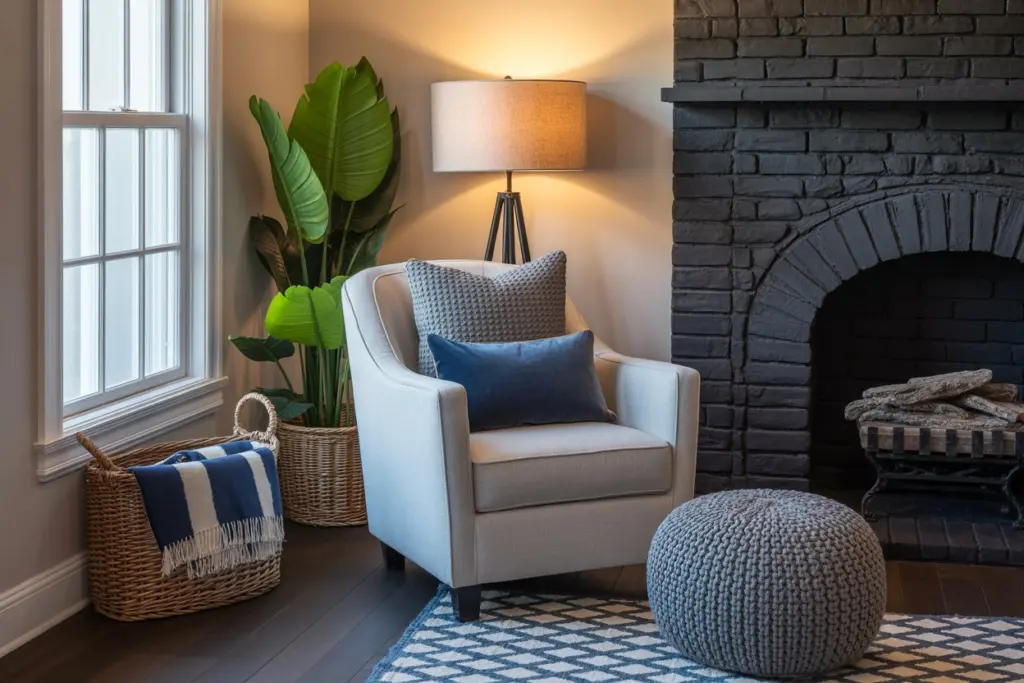
Kitchen and dining room
They may not be the ideal places to create a reading nook, you can still incorporate a small reading space in these areas. For example, you can add a small bookshelf and a comfortable chair or bench to a corner of your dining room or kitchen to create a cozy spot to read while you enjoy your meals or take a break from cooking.
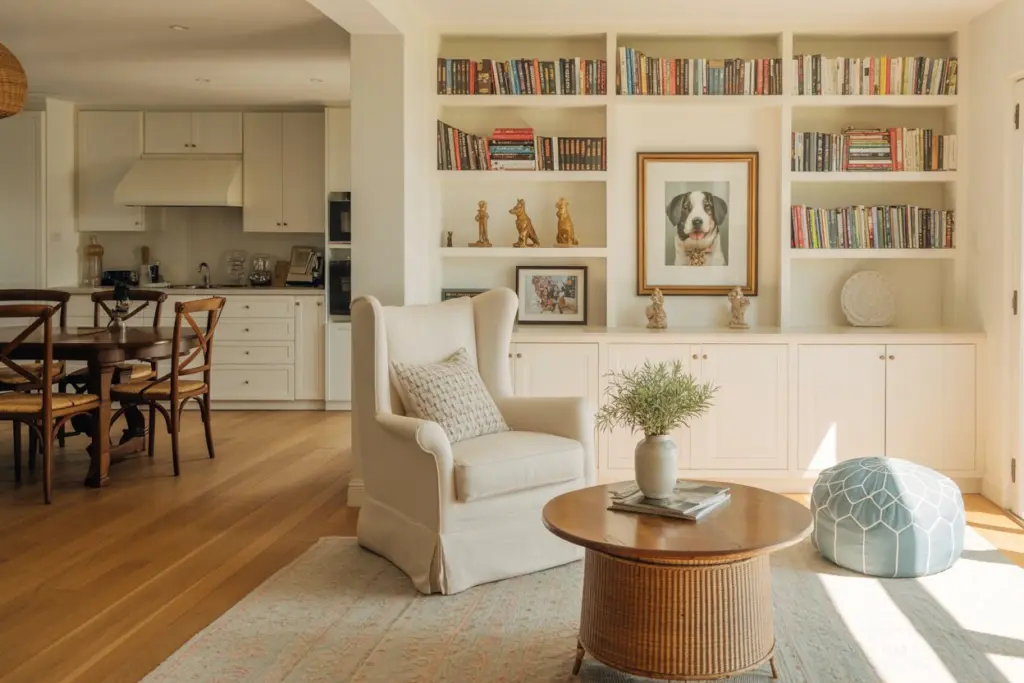
Hallway
Hallway isa great place to create a reading nook if you have a wide enough space. You can add some shelves or a bookcase, a comfortable chair or bench, and some soft lighting to create a cozy spot to read and relax.
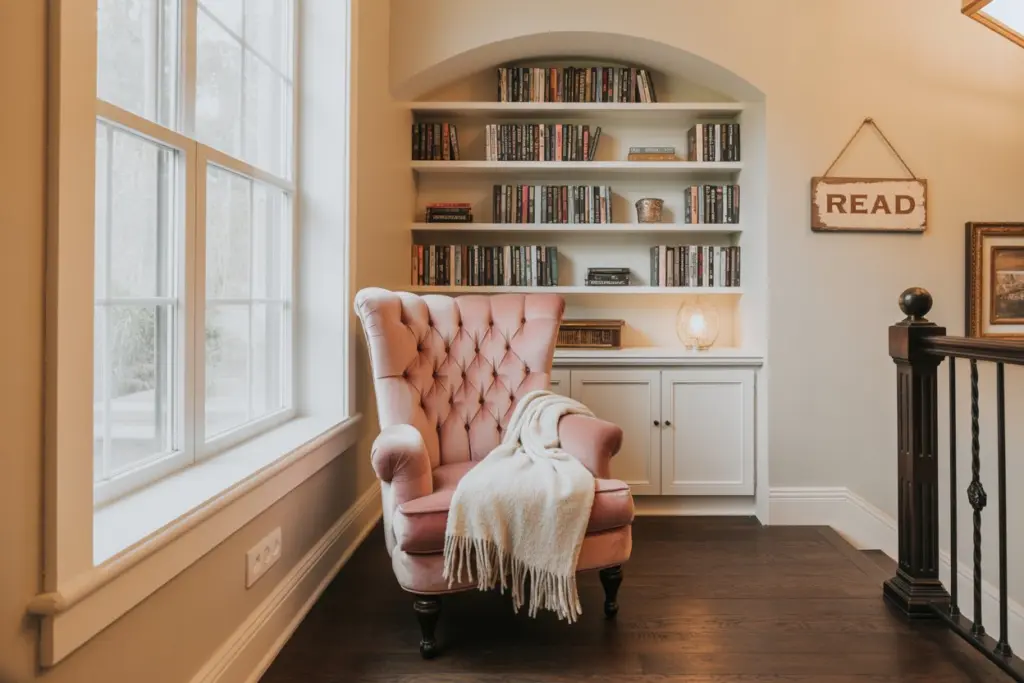
Under the stairs
If you have a staircase in your home, consider creating a reading nook underneath it. You can install shelves or a bookcase, add a comfortable bench or bean bag, and some soft lighting.
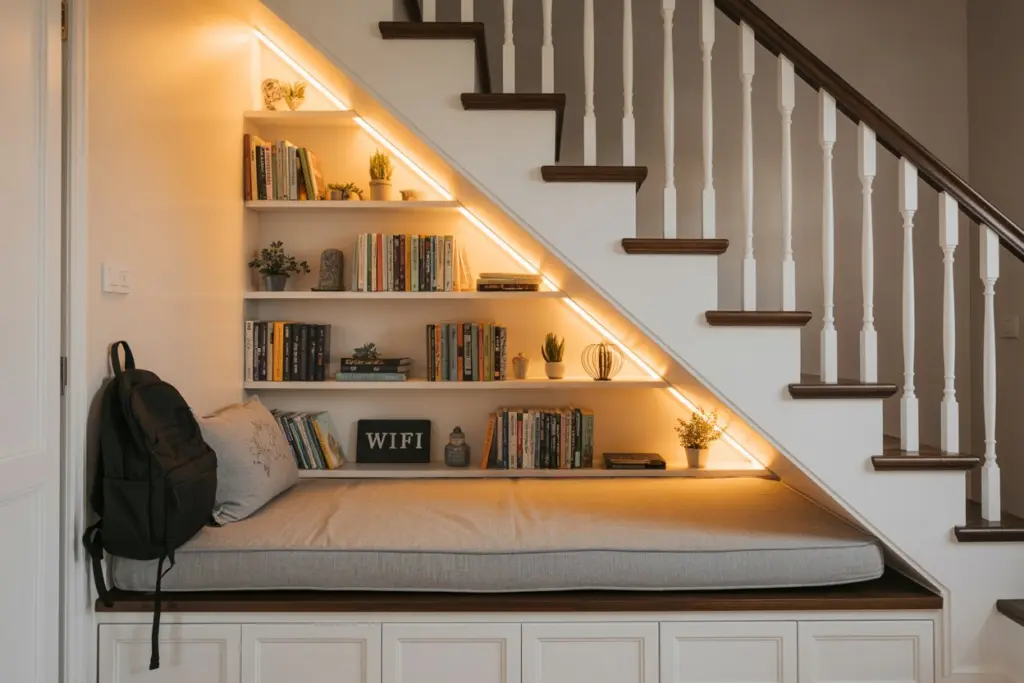
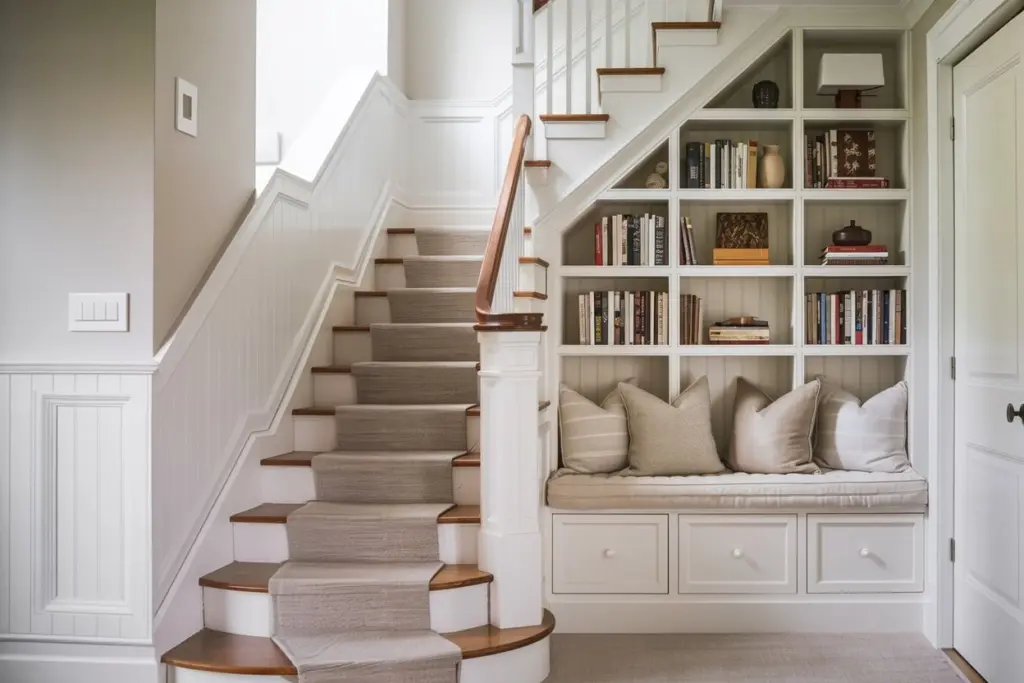
Window seat
While, for a window with a view, consider creating a reading nook by adding a bench or cushions under the windowsill. This is a great option if you have limited space.
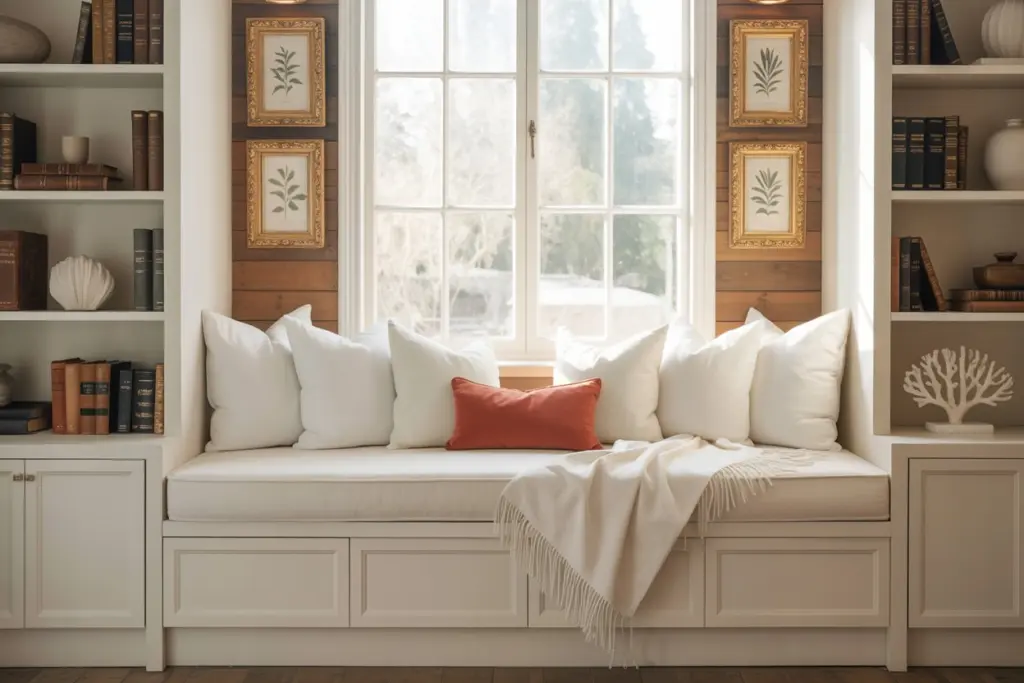
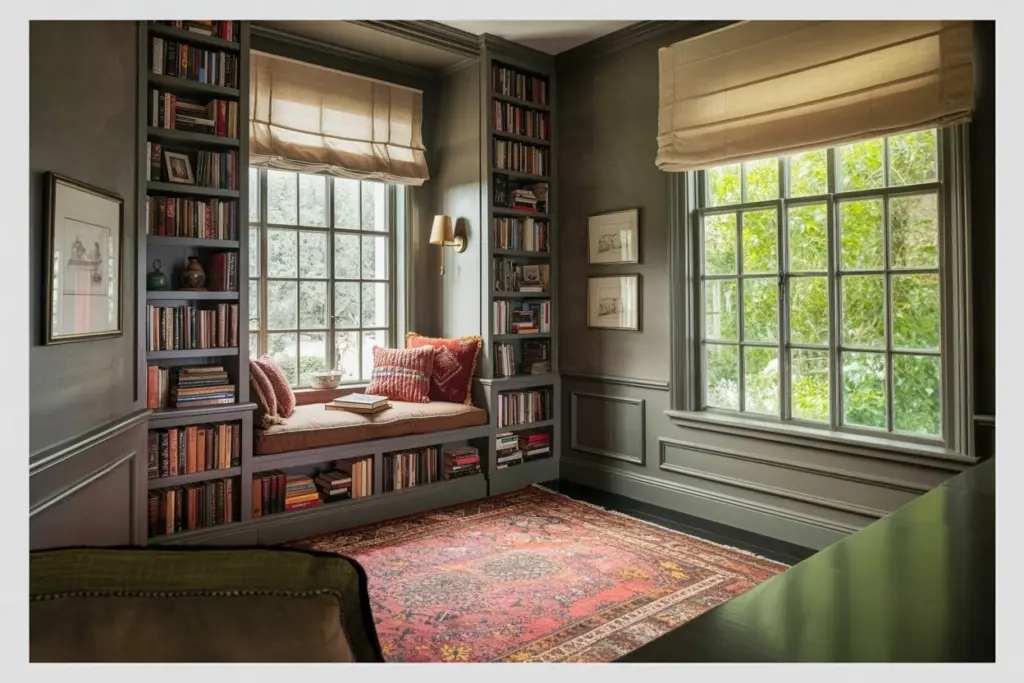
Attic or basement
Consider transforming an unused attic or basement space into a reading nook. You can add some shelves, a comfortable armchair, and a lamp to create a cozy space.
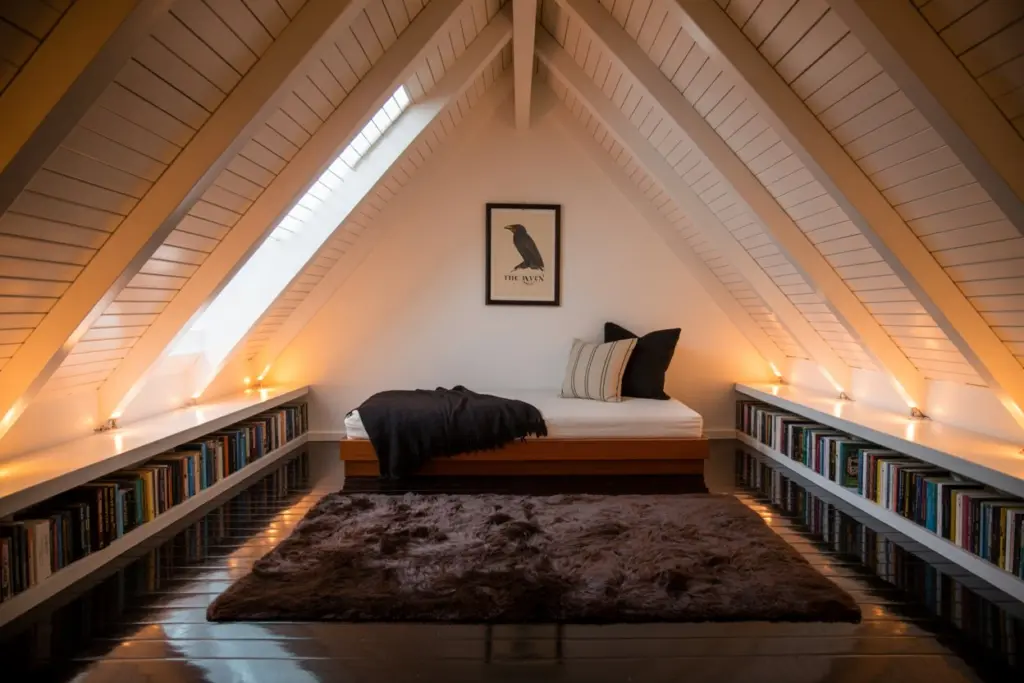
Outdoor space
Add some comfortable seating, a side table, and some potted plants to create a peaceful and relaxing outdoor reading nook.
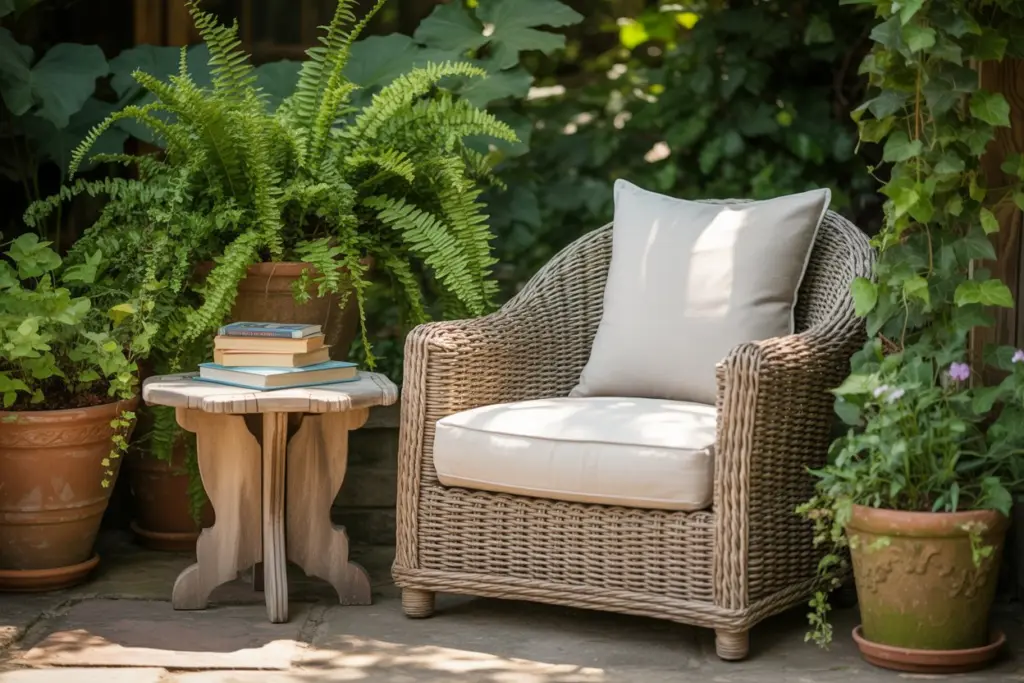
Unused closet
Transform an unused closet in your home into a reading nook. Remove the closet doors; add some shelves, a comfortable chair or beanbag, and some soft lighting.
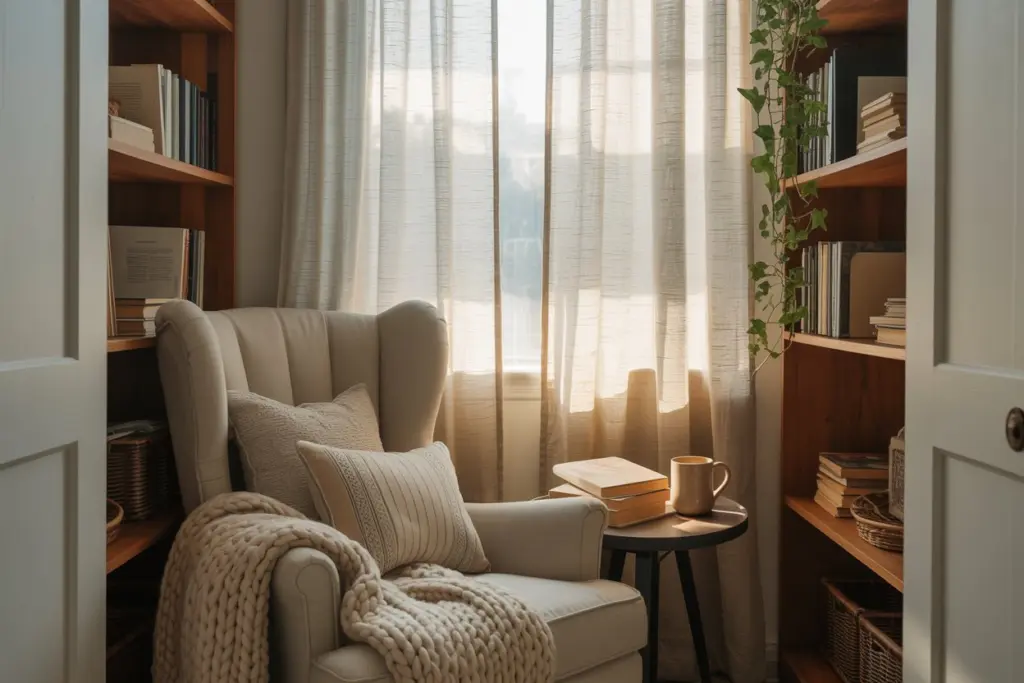
Loft or mezzanine
If you have a loft or mezzanine in your home, consider turning it into a cozy reading nook. Add a comfortable chair or daybed, some shelves or a bookcase, and some soft lighting.

Under a bunk bed
Turn the space under the bottom bunk into a reading nook. Add a comfortable chair, some shelves or a bookcase, and some soft lighting.
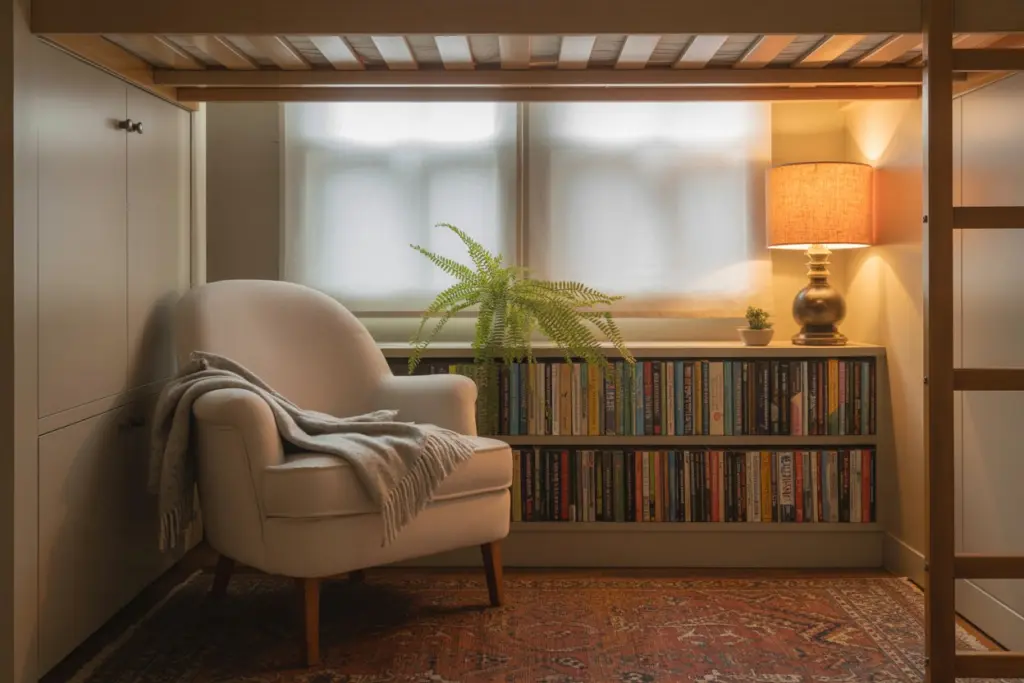
A dedicated room
If you have a spare room in your home, consider turning it into a dedicated reading room. Add some comfortable seating, a bookcase, and some soft lighting to create a peaceful and relaxing space.
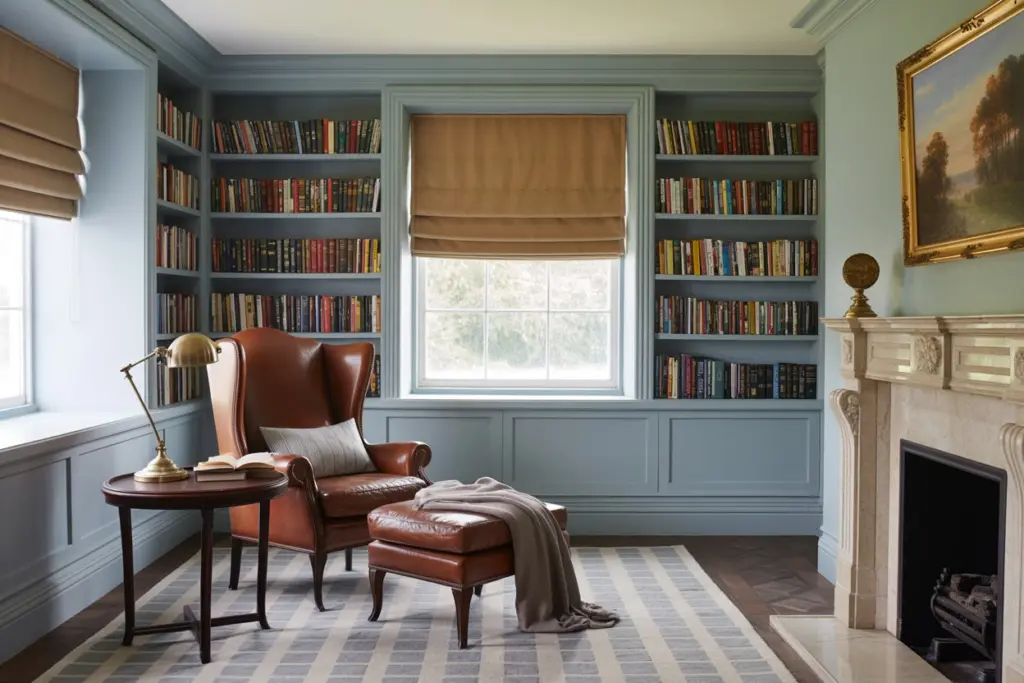
Tips to create a perfect reading nook
Here are some tips to help you create a perfect reading nook area:
Find a quiet spot
Look for a quiet spot in your home that is away from noisy areas, such as the living room or kitchen. A quiet spot will help you focus on your reading and allow you to relax and unwind.
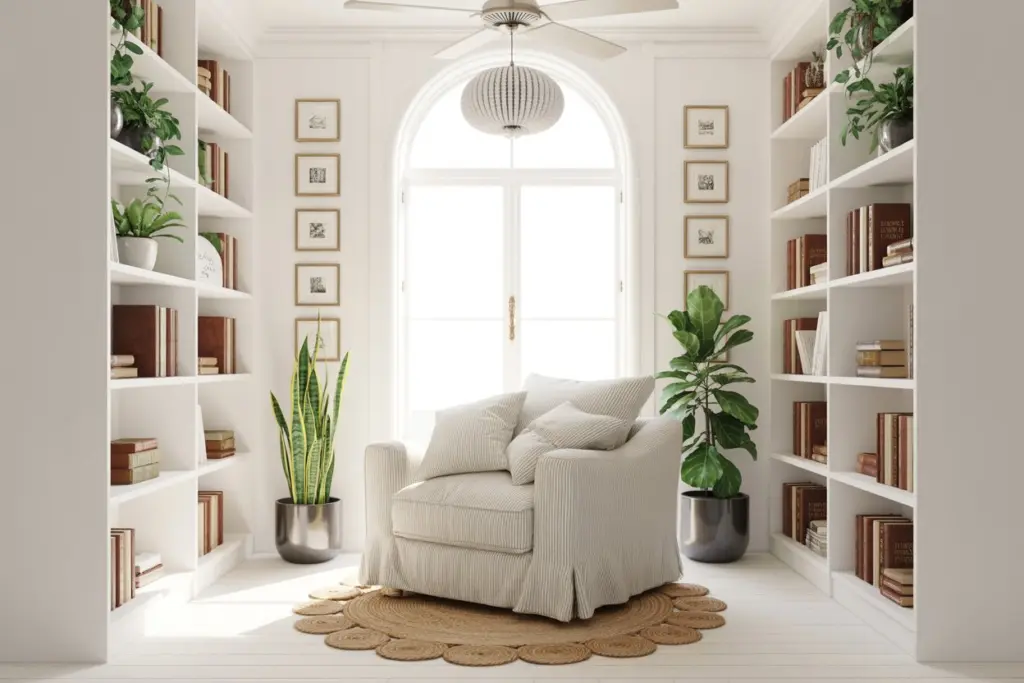
Add comfortable seating
Choose a comfortable chair, bench, or daybed that provides good support for your back and neck. Make sure the seating is wide enough to allow you to stretch out and relax.
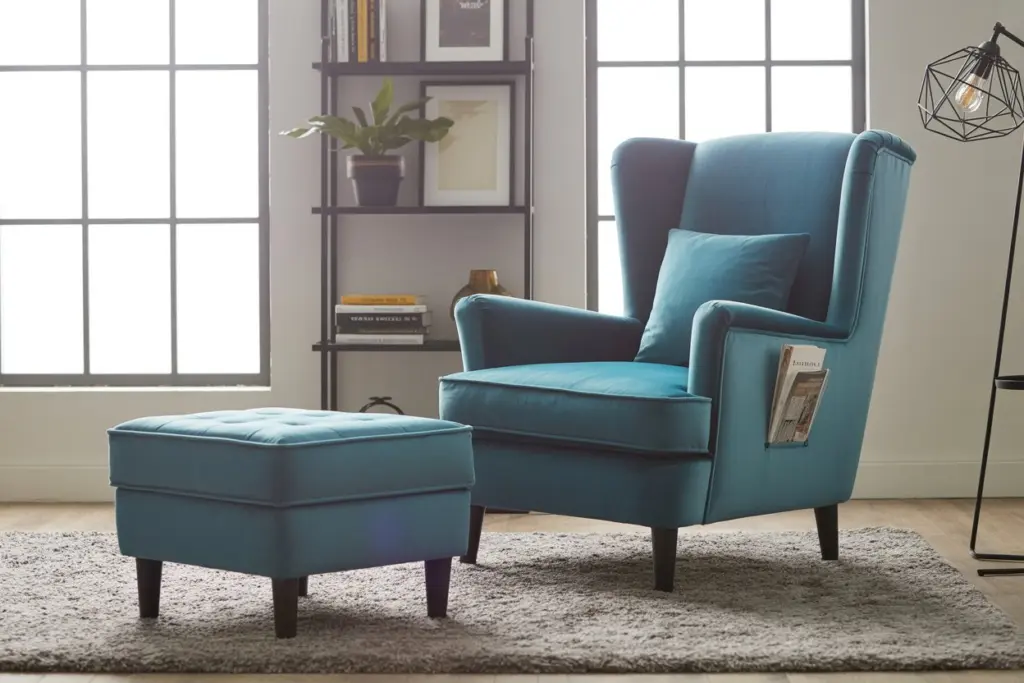
Good lighting
Natural lighting is ideal, but if you’re creating your reading nook in a dimly lit area, make sure to add some good lighting. You can add a table lamp or floor lamp to provide ample light for reading.
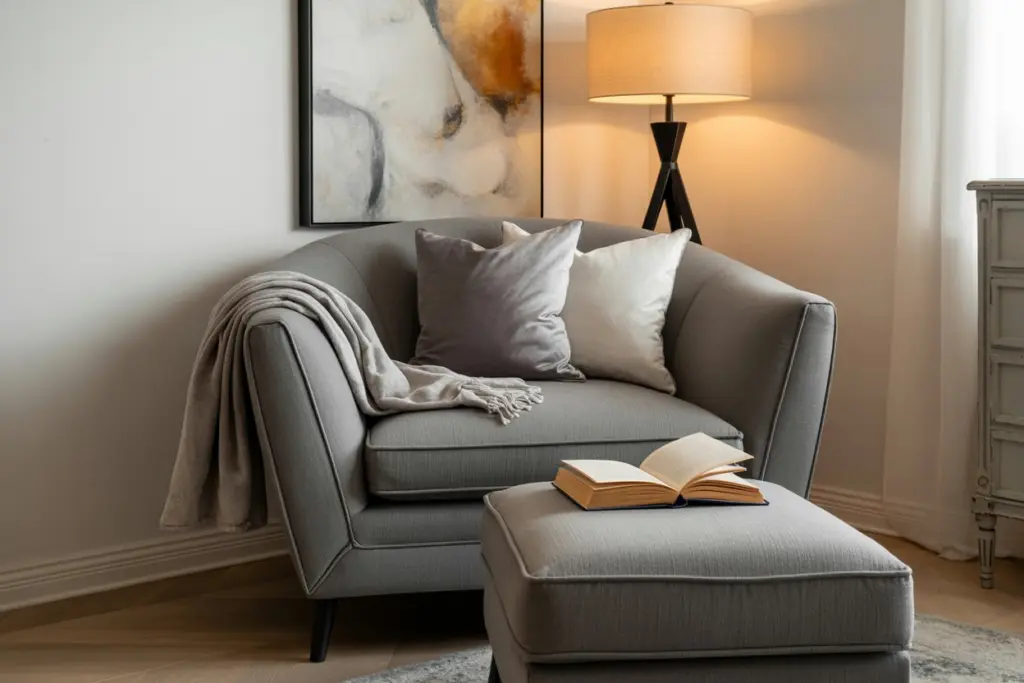
Book storage
Add a bookshelf or a stack of books within easy reach so that you can easily find something to read. You can also add a small table or side table to hold your reading materials.
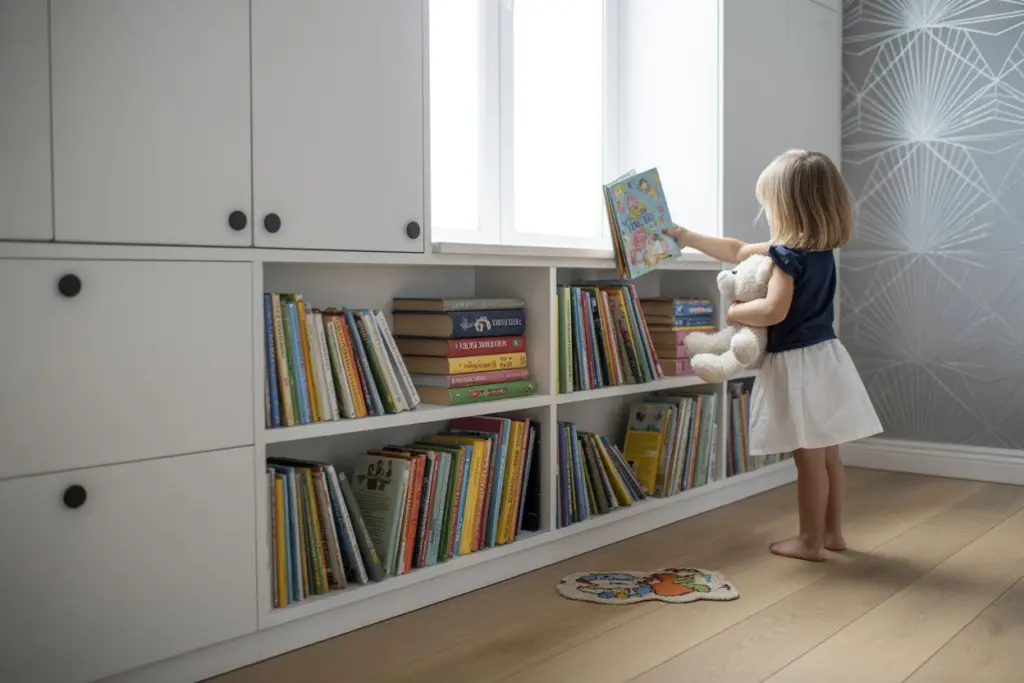
Cozy textiles
Add some cozy textiles, such as a soft cushion, a throw, or a rug to create a comfortable and inviting space.

Personalize your space
Add personal touches such as artwork, photographs, or plants to make your reading nook feel like your own.
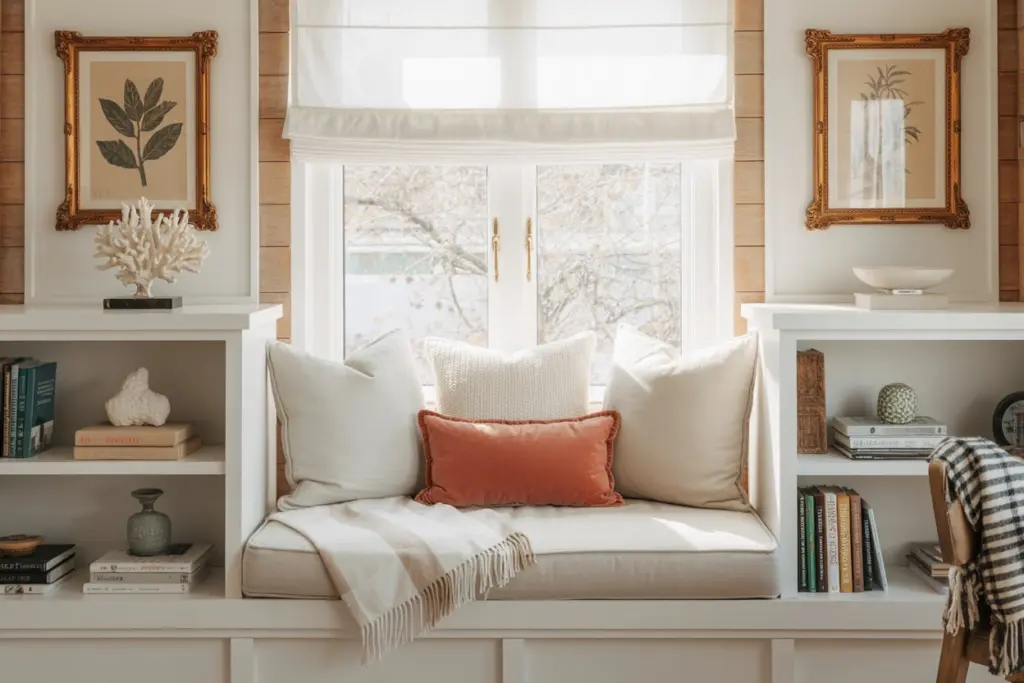
Control the temperature
Make sure the temperature is comfortable and conducive to reading. If the area tends to be chilly, add a soft throw or a heated blanket to keep you warm.
Minimize distractions
Keep distractions to a minimum by turning off your phone, TV, or computer. You can also use noise-cancelling headphones to block out noise from other areas of your home.
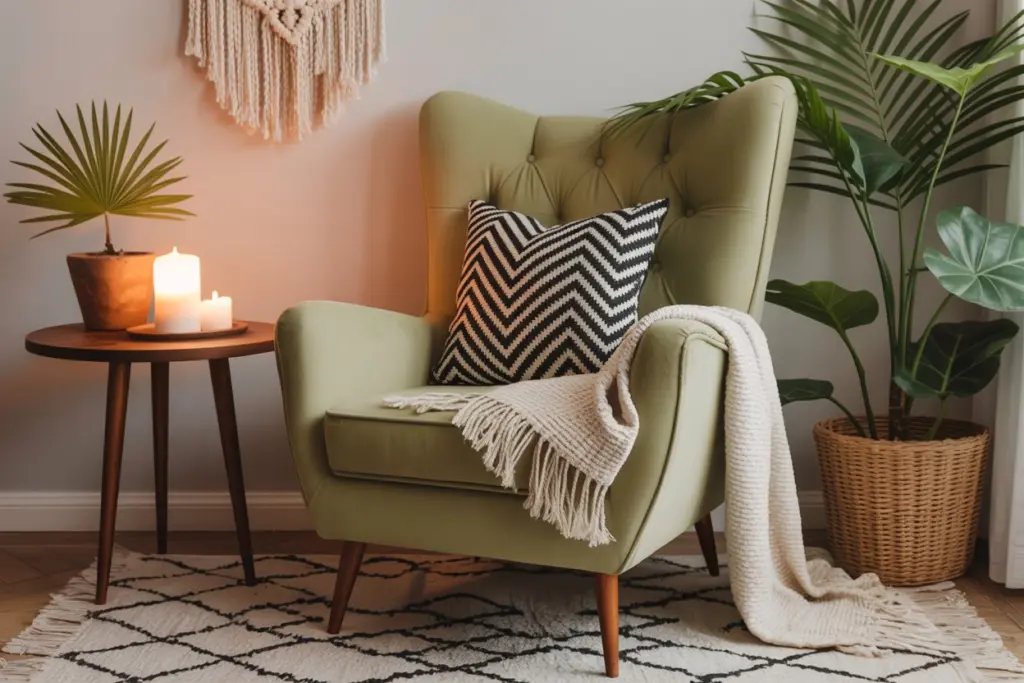
Add greenery
Plants can help create a calming and relaxing atmosphere. Consider adding some low-maintenance plants, such as succulents, to your reading nook area.
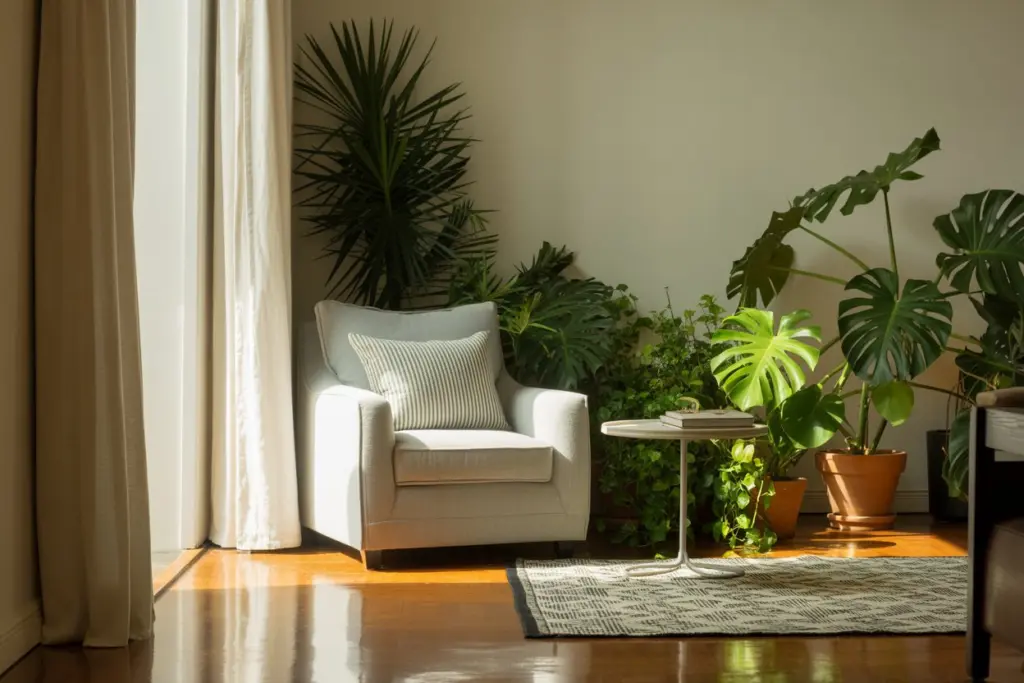
Use color
Choose colors that make you feel calm and relaxed. Soft blues, greens, and neutrals can create a serene atmosphere.
Incorporate aromatherapy
Essential oils or candles can help create a relaxing ambiance. Choose scents that promote relaxation, such as lavender or chamomile.
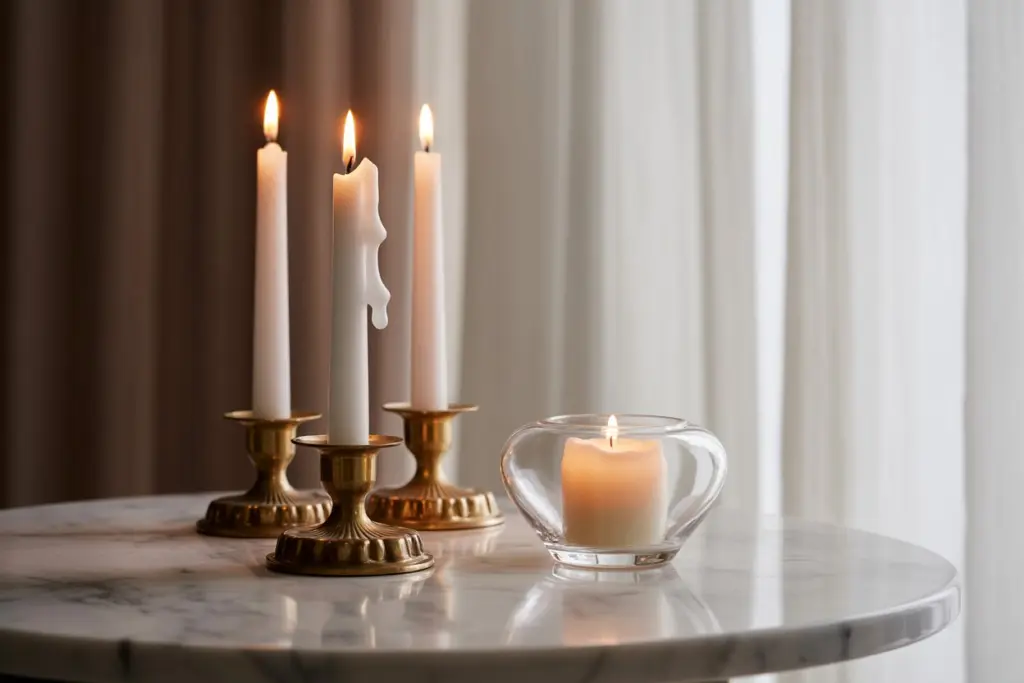
Use soundscapes
Playing soft background music or natural soundscapes, such as waves or rain, can help create a relaxing atmosphere and block out external noise.
Keep it clutter-free
Keep your reading nook area clutter-free by removing any unnecessary items. This can help create a calming and organized atmosphere.
A special reading nook for a special style
A reading nook can be a great way to create a cozy and inviting space in your home. And, just like any other room in your house, you can use different decoration styles to create a reading nook that reflects your personal taste and style. Here are a few ideas for decorating your reading nook with different styles:
Rustic reading nook
You love the natural look of wood, stone, and other raw materials, a rustic reading nook might be just the thing for you. Use wood furniture, like a reclaimed wood bookshelf or a rocking chair with a wooden frame, to create a warm and inviting atmosphere. Add a cozy throw blanket or a fur rug to keep things cozy.
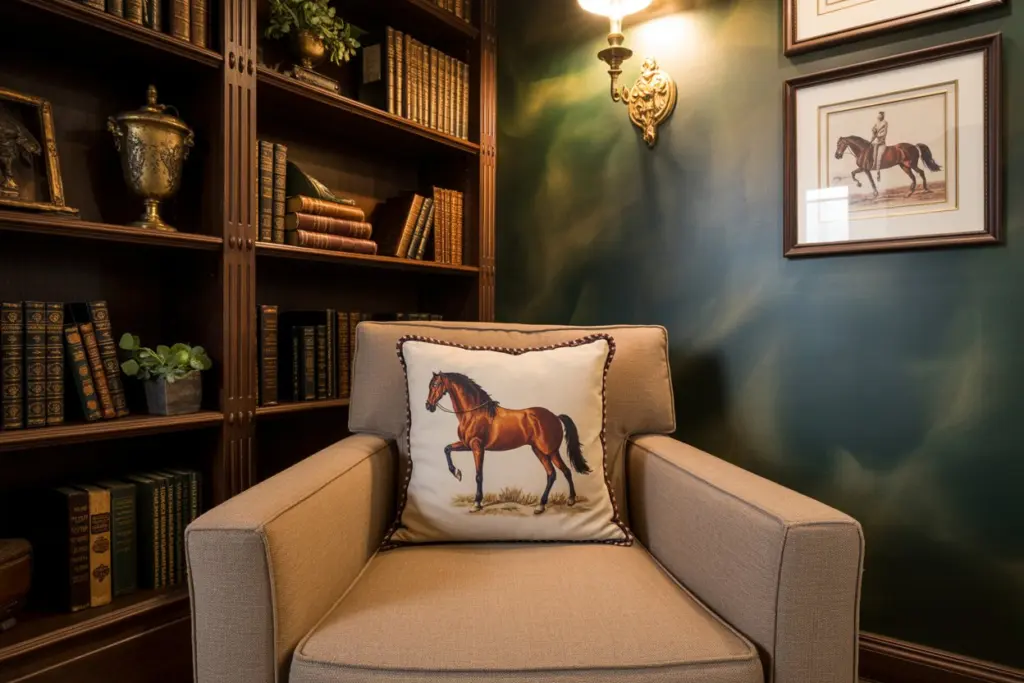
Modern reading nook
You prefer a sleek and minimalist look; a modern reading nook might be the way to go. Use simple, clean-lined furniture, like a metal and glass bookshelf or a modern lounge chair, to create a contemporary vibe. Add some pops of color with bright accent pillows or a colorful area rug.
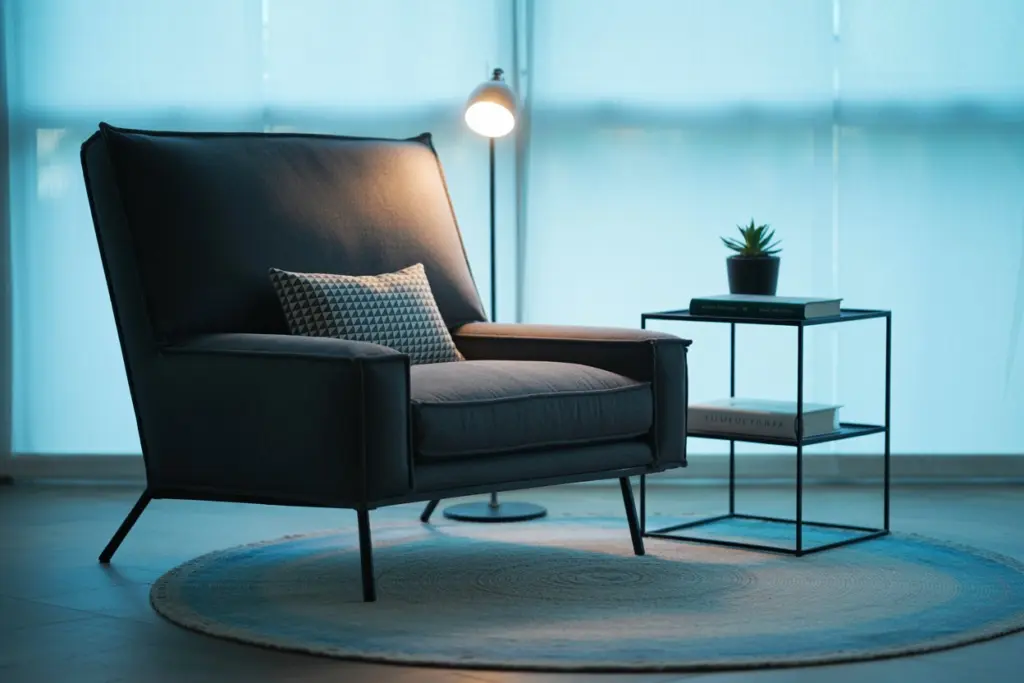
Bohemian reading nook
A bohemian reading nook is all about texture and pattern. Use lots of colorful textiles, like woven rugs, patterned throw pillows, and tapestries, to create a cozy and inviting space. Add some plants and natural elements, like a woven rattan chair or a wicker basket, to complete the look.
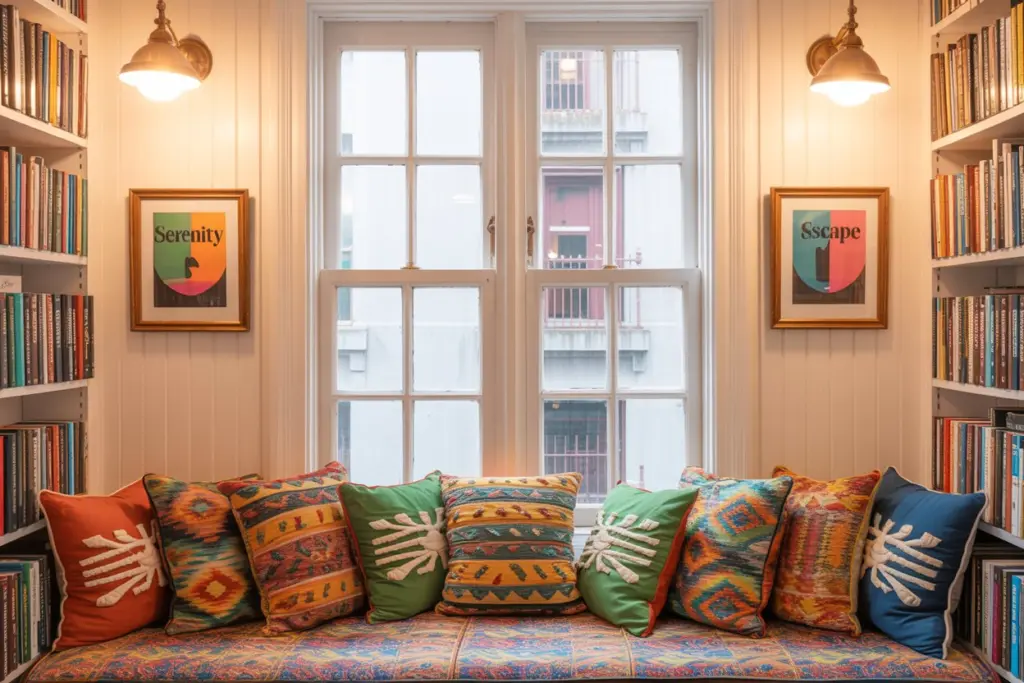
Coastal reading nook
If you love the beachy vibe of coastal decor, a coastal reading nook might be the perfect fit for you. Use light, airy colors like white, beige, and blue to create a calm and relaxing atmosphere. Add some beachy accents, like seashells or driftwood, to bring the ocean indoors.

How to organize your books
Here are some tips on how to organize your books:
Sort your books by category: Start by sorting your books into categories such as fiction, non-fiction, biographies, or children’s books. This will make it easier to find the book you’re looking for.
Alphabetize your books: Within each category, alphabetize your books by author or title. This will make it easier to locate a specific book.
Consider organizing by color: If you have a large collection of books and want to add a decorative touch to your reading nook area, consider organizing your books by color. This can create an eye-catching display.
Keep a “to-read” pile: Keep a separate pile of books that you haven’t read yet. This can help you keep track of the books you want to read and avoid forgetting about them.
Don’t overcrowd your shelves: Leave some space between your books to make them easier to access and prevent them from becoming cramped and disorganized.
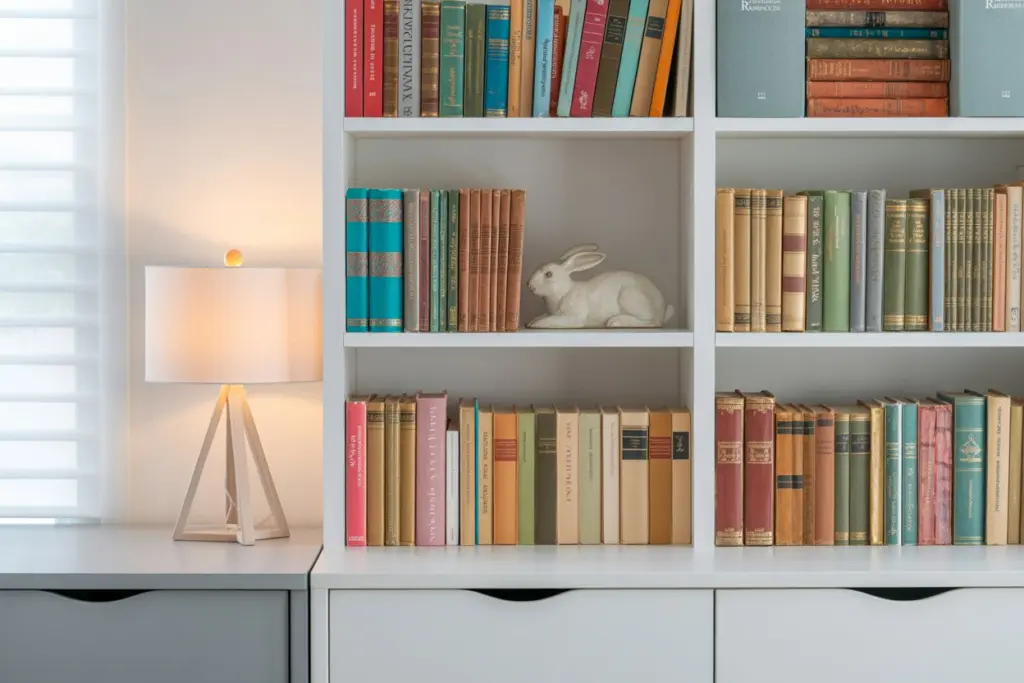
Preserve your books in reading nook
Keep your books away from direct sunlight: Direct sunlight can cause fading and damage to the covers and pages of your books. Keep your books away from windows or areas with direct sunlight.
Avoid exposure to moisture: Moisture can cause your books to warp, mold, or become discolored. Keep your books away from areas with high humidity, such as bathrooms or kitchens, and avoid storing them near a humidifier or in damp areas.
Keep your books away from heat sources: Heat can also damage your books by causing the pages to yellow or warp. Keep your books away from radiators, fireplaces, or other heat sources.
Use bookends: Bookends can help keep your books upright and prevent them from falling over or becoming damaged.
Dust your books regularly: Dust can accumulate on your books, which can attract insects and cause damage over time. Use a soft, dry cloth or a soft-bristled brush to gently remove dust from your books.
Store your books properly: Store your books on sturdy, flat shelves that are not overcrowded, and avoid stacking them on top of each other. You can also consider using acid-free paper to separate your books and prevent damage.
